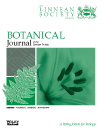-
Views
-
Cite
Cite
SHAUN RUSSELL, Bryophyte production and decomposition in tundra ecosystems, Botanical Journal of the Linnean Society, Volume 104, Issue 1-3, September 1990, Pages 3–22, https://doi.org/10.1111/j.1095-8339.1990.tb02208.x
Close - Share Icon Share
Abstract
Bryophytes attain maximum relative importance in terms of biomass and production in the tundra biome. They contribute an average of 30% to the vegetation cover across a broad range of tundra sites, but often reach 100% cover in wetter and more protected situations. Figures for bryophyte phytomass span several orders of magnitude depending on severity of habitat conditions. Very high standing crops reflect organic matter accumulation due to low decomposition rates at the wettest sites. Initial annual loss rates are commonly below 10% in bryophyte-dominated habitats throughout the tundra. Bryophyte production ranges from less than 1 gm−2 yr−1 in polar desert, to more than 1000gm−2yr−1 at wetter sites in the sub-Antarctic where a long growing season prevails.
However, many published values for tundra bryophyte production are based on suspect methodology and cannot be accurately compared between sites. The new generation of lightweight field-portable equipment for measuring gas exchange and microclimatic variables provides the potential for improving our knowledge of bryophyte productivity in relation to environmental factors in the tundra biome.
It is unfortunate, therefore, that the emphasis has shifted away from bryophyte autecological studies at important northern sites where increasing human impact is threatening this fragile biome type.




